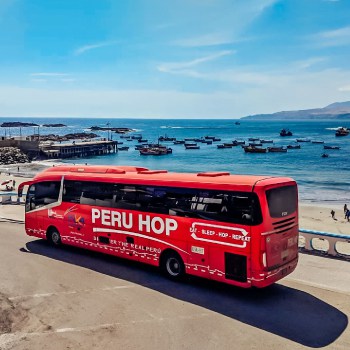Why Was Machu Picchu Built?
Machu Picchu is often characterized as an Inca fortress or Inca citadel. This, however, does not really touch upon the exact purpose of Machu Picchu; it does not answer the fundamental question: “Why was Machu Picchu built?” If you are planning a trip to Machu Picchu (or just have a passing interest), here is a quick rundown of the various theories, past and present, as to what Machu Picchu actually was and when it was built.
For a full chronology of the Incas, read our Inca Timeline.
Hiram Bingham’s Machu Picchu Theories
Hiram Bingham rediscovered Machu Picchu in 1911. His initial theories as to why Machu Picchu was built were slightly clouded (and largely incorrect) due to a lack of information, an understandable bout of over-enthusiasm and, perhaps, a powerful desire to paint Machu Picchu in as grand a light as possible. In a nutshell, Bingham believed that he had found:
- Vilcabamba, the last refuge of the Inca Empire. The site of Vilcabamba has since been located at Espíritu Pampa (which Bingham had also rediscovered, but failed to interpret correctly).
- Tampu-tocco, the legendary birthplace of Manco Capac and the Inca Empire. Few archaeologists now consider Machu Picchu to be Tampu-tocco, and many doubt it was ever anything more than a legend.
- Last refuge of the Inca Virgins of the Sun. A bit of a long shot, this one. Bingham believed that these Virgins fled from Cusco to Machu Picchu to escape the Conquistadors, where they grew old gracefully. Doubtful.
When and Why Was Machu Picchu Built?
Bingham’s ideas held sway for the best part of half a century. However, modern studies have largely discredited any notions of Machu Picchu as Vilcabamba, Tampu-tocco or a hot spot for holy Virgins. Today, historians tend to see Machu Picchu as one or more of the following:
- An Inca fortress: Machu Picchu does possess various elements of a defensive structure: a hilltop location, steep sides, access via narrow trails, terraces that would impede attack, and undeniably sturdy walls. The lack of an unbroken, encompassing perimeter wall, however, suggests that defense was not a primary purpose.
- An Inca religious centre: Structures such as the Temple of the Sun, the Room of the Three Windows and the Temple of the Intihuatana (believed to function as a solar calendar or clock) provide ample evidence of Machu Picchu’s religious importance. For historian Luis G. Lumbreras, the walls of Machu Picchu’s urban area have a ceremonial, rather than defensive, function, serving “not as part of a military fortification, rather as a form of restricted ceremonial isolation.” Machu Picchu is certainly a grand structure — too grand to be a simple fortress, but grand enough for the Gods.
- An Inca administrative centre: The Incas built administrative centers — known as tambos or llactas — throughout their empire. Some archaeologists have seen Machu Picchu as an administrative center: a location for controlling the local area. Again, however, the grandeur of the site suggests a higher function. According to Richard Burger and Lucy Salazar-Burger, “Its location and strongly religious character set it apart from the administrative way stations called tambos that the Incas had set up along their 50,000-kilometer (more than 30,000 miles) road network.”
- An Inca royal estate: Since the 1980s, archaeologists such as Richard Burger, Lucy Salazar-Burger, John Howland Rowe and Mariá Rostworowski have researched and supported the idea of Machu Picchu as a royal Inca estate…

This last theory is currently the most widely accepted. According to Richard Burger and Lucy Salazar-Burger, the entire area surrounding Machu Picchu consisted of land privately held by the Inca emperor Pachacuti (Inca Yupanqui). Here, “members of the Incan royalty relaxed, hunted, and entertained foreign dignitaries and other guests in Machu Picchu’s warmer and more pleasant climate.” As a royal retreat, Machu Picchu provided an escape from Cusco’s harsh winter climate. Considering the importance of the emperor and his guests, it is understandable that Machu Picchu would also function as an administrative, religious and defensive location.
Pachacuti ruled as Sapa Inca from 1438 until 1472, placing the construction of Machu Picchu somewhere during this period (most likely during the latter half of his reign).
Aliens Built Machu Picchu?
Without wanting to cause any offense to aliens, who I’m sure build very beautiful things on their own planets, it would appear that they did not build Machu Picchu. Aliens are quite often given credit for mankind’s great achievements, mainly because most people find aliens more interesting than archaeology.
However, unless you want to write a “controversial” book that might sell quite well, it’s probably a good idea to forget about Martians, little green men and other forms of extraterrestrial life when contemplating the question, “Why was Machu Picchu built?”
If you’re wanting to view more options, we suggest you check out FindLocalTrips.com a tour comparison website with heaps of info and all the different options for taking that trip of a lifetime.











10 comments for “Why Was Machu Picchu Built?”